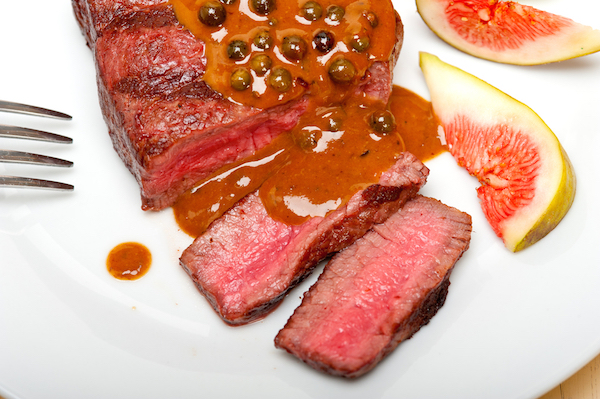
At Teys, we’re obsessed with food science and how it can help us produce high quality and 100% tasty, Aussie beef. Knowing the science of flavour is just the start.
As children, many of us were taught that there are 4 kinds of taste qualities – sweet, salty, sour and bitter.
This list leaves out one of the most important flavours that we experience regularly – the flavour that makes seared meats so delicious, aged cheeses so satisfying and brothy soups so comforting.
This flavour is referred to an ‘umami’ (ooh-mah-me), which is Japanese for “pleasant savoury taste” or “yummy”. Umami is a flavour that everyone loves and craves. It is the hearty, savoury flavour that characterises steak, pot roast, short ribs and a number of other beef favourites.
Umami’s Origin Story
Umami was pinpointed by Japanese chemistry professor (and food lover) Kikunae Ikeda in the 1900s. He ate a bowl of seaweed soup and realised that he was tasting something delicious that couldn’t be described by one of the four taste qualities.
Despite this early identification, the existence of this fifth essential flavour was disputed until 2002 (even though people taste this flavour every day!).
So… What Is Umami?
Umami is the taste of protein that has been broken down into amino acids. Technically, it refers to glutamine, which is a type of amino acid that occurs naturally in foods like meat, fish, vegetables and dairy products.
When glutamine breaks down (i.e. when it dies or ferments, which occurs when meat is cooked, cheese is aged or vegetables are ripened in the sun), it becomes L-glutamine, and this is where fantastic flavour really starts to develop.
Umami taste is common in foods with high levels of L-glutamate as well as Inosinic acid and Guanosine monophosphate. These include fish, shellfish, cured meats, mushrooms, vegetables (e.g. ripe tomatoes, Chinese cabbage, spinach, celery, etc.), green tea and fermented or aged products involving bacterial or yeast cultures (like cheeses, shrimp pastes, fish sauce, soy sauce, nutritional yeast and yeast extracts like Vegemite).
Have you ever tried steak and vegemite? If not, you’ve got to give it a go in this recipe for ‘Steak Sheila’.
Umami & Beef
Think about the top flavours you love to pair with steak – mushroom gravy, BBQ sauce, tomato sauce, bacon, Worcestershire sauce – all of these are rich in umami. When two umami-rich foods are paired, they produce 8 times as much flavour as either of the compounds alone, which explains why a perfectly seared steak with a delicious sauce is so hard to beat.
Interestingly, tougher cuts like chuck and brisket (well-exercised muscles that require low and slow cooking) have more natural umami than traditionally more expensive cuts like filet mignon. To bring out the umami flavour in filet mignon, you need to make sure that you caramelise the steak well (you can also pair it with an umami-rich sauce or marinade). If you want steak with the most umami, opt for dry-aged, as the enzymatic action that occurs during ageing produces plenty of umami flavour and the flavours get more concentrated as the water evaporates.
Wy Do We Crave Umami?
Just as humans evolved to crave sweetness for sugars (and, therefore, calories and energy) and loathe bitter flavours (to help avoid toxins), we crave umami for biological reasons. The umami taste draws us to foods that are high in protein and therefore essential for our survival.
For the ultimate umami hit, check out our beef solutions here.
The information in this post is adapted from Huffpost, Wikipedia, Beef Magazine and The Guardian.
 Return to News
Return to News

















